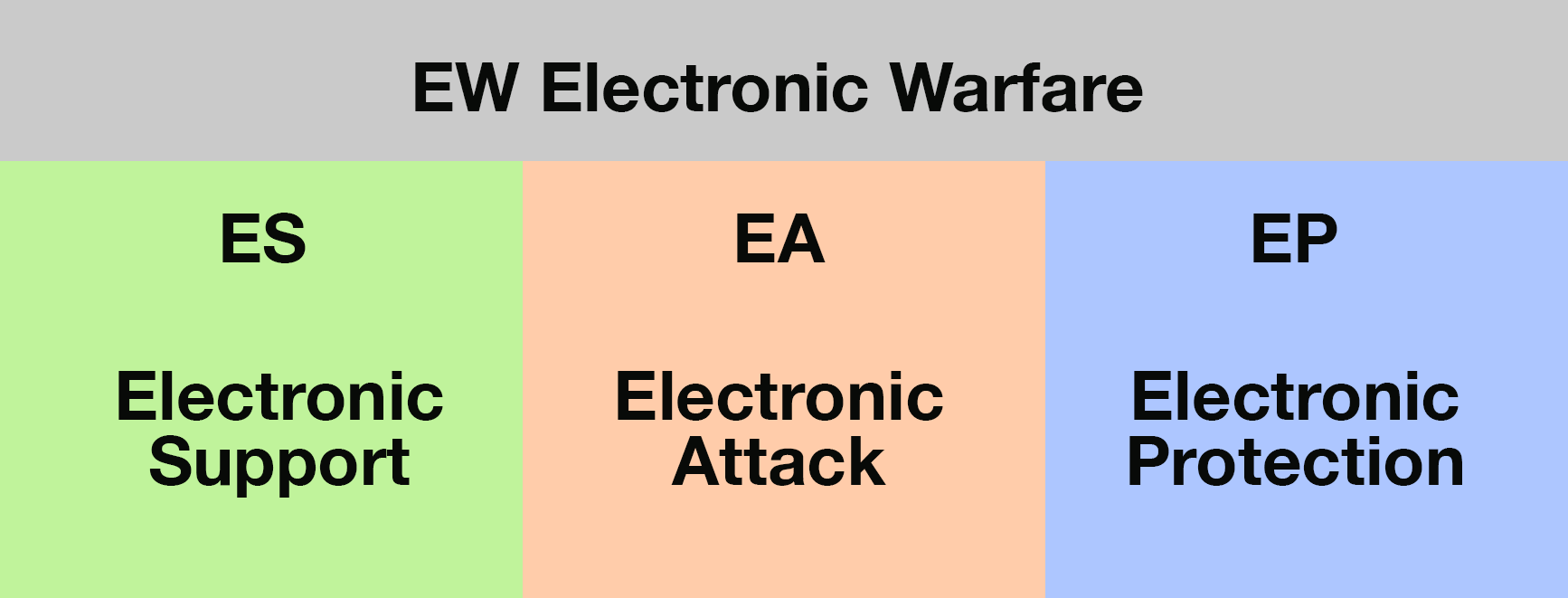Welcome to our blog series where we dive into the most important concepts and terminology of electronic warfare. Through a sequence of interconnected articles, we aim to equip you with the knowledge necessary to comprehend the fundamental principles and intricate systems of jamming and its association with electronic warfare. This blog series is directed to a diverse audience, ranging from beginners eager to explore this field to seasoned experts seeking further insights.
At SkyRadar, we offer a wide array of products and solutions designed to facilitate a hands-on understanding of these concepts, rather than relying solely on theoretical knowledge. Our comprehensive hardware and software solutions enable practical exploration of electronic warfare systems, empowering you to gain a deeper grasp of the subject matter.
Before we dive into the fascinating world of jamming concepts in this introductory article, let's establish a common understanding of electronic warfare (EW) concept and its subfields, especially for those who are new to this domain.
What is Electronic Warfare?
Electronic warfare can be described as the scientific practice of leveraging the advantages offered by the electromagnetic spectrum to benefit ourselves and our friendly forces, while simultaneously denying these benefits to the adversary. This dynamic discipline finds application in various environments, like air, land, sea, and space. It harnesses the entire electromagnetic spectrum, spanning from just above direct current (DC) frequencies to well above the daylight spectrum, with a primary focus on countering attempts to disrupt the spectrum's utilization for military operations.
Electronic warfare (EW) encompasses a wide range of devices engaged in the transmission and reception of electromagnetic signals. This diverse array includes predominantly radars, but also extends to other communication devices and equipment designed for locating potential targets through emission on various frequency bands.
The electronic warfare is divided in three subfields which are:
- ES (electronic support) which can be found in literature also as electronic support measures (ESM).
- EA (electronic attack) which can be found in literature also as electronic counter measures (ECM)
- EP (electronic protection) which can be found in literature also as electronic counter-countermeasure (ECCM)

Figure 1. Electronic warfare and the its subfields
Electronic Support
Electronic warfare support (ES) plays an important role in electronic warfare as it functions as the listening component. Before implementing effective countermeasures against enemy radars, having insights into the signals they emit becomes crucial. ES involves the reception and analysis of hostile emissions, encompassing radars, communication channels, and data links. The information gathered is then displayed to the aircrew, facilitating informed decision-making.
By skillfully receiving, identifying, and locating hostile emitters, ES significantly contributes to cueing countermeasures and developing electronic order of battle models for hostile forces.
As ES is essentially a receiving function, it becomes pertinent to explore the foundational building blocks of receiving systems at this stage. Understanding these essential components empowers us to comprehend the complexity of electronic warfare support and its important role in modern military operations. The essential components required for electronic support will be described in detail in another article.
Electronic Attack
Electronic attack (EA) forms the active component of Electronic Warfare, involving strategic actions to diminish the effectiveness of enemy weapons. These actions encompass various approaches, such as deploying jamming techniques, dispersing chaff or flares, and transmitting energy to disrupt enemy sensors.
The effectiveness of jamming is influenced by factors like geometric considerations, the nature of enemy signals, and the strategy employed by the EA system. While jamming may be applied against enemy communications, the primary focus of this blog series centers on EA directed towards radars, with particular emphasis on radar jamming.
Electronic Protection
Electronic protection (EP) focuses on safeguarding sensors from enemy electronic attacks. Unlike electronic support (ES) and electronic attack (EA), EP typically does not require distinct subsystems. Instead, it encompasses a range of design elements integrated into radars and communication systems to mitigate the impact of jamming.
EP techniques consider various strategies, including employing unique modulations, special antenna features, countering jamming by adding phase-shifted replicas of jamming signals, and implementing special radar operating modes. These measures increase the resilience of sensors against electronic threats, enhancing the overall effectiveness of electronic warfare defense.
Many Applications for Electronic Warfare
Follow our blogs and videos on Electronic Warfare with SkyRadar's Disturbance Filtering & Analysis solutions, the jammers and the Pulse Radar! SkyRadar is the only provider world-wide, providing manufacturer-agnostic ECM and ECCM training with simulators and real radars and jammers. Learn more about the simulator, range deception, angle deception, speed deception, radar lock on and major state of the art defense algorithms against malicious attacks.
Such defense is not only useful in a military context but also in a civil aviation setting. Increasingly speed radar jammers by trucks and cars disturb airport infrastructure. Also hybrid warfare is used to perturb critical infrastructure like airports and civil air surveillance and navigation services.




